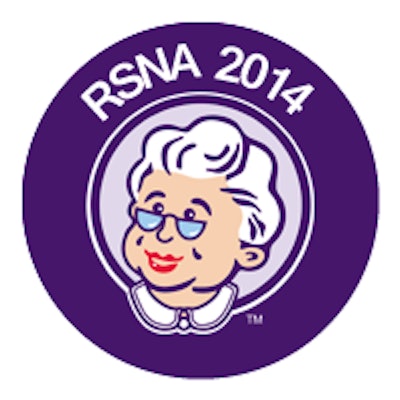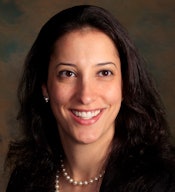
CHICAGO - A risk-based approach to screening mammography -- that is, limiting screening to women with a very strong family history of breast cancer or extremely dense breasts -- would reduce by more than 75% the number of screen-detected cancers in younger women, according to study results to be presented on Thursday.
When the U.S. Preventive Services Task Force (USPSTF) issued its 2009 screening mammography guideline -- which recommended that women start screening at 50 and continue biennially, unless a woman's risk factors suggest otherwise -- risk-based strategies began to be proposed to winnow the screening population, according to researchers from the University of California, San Francisco (UCSF).
 Dr. Elissa Price from UCSF.
Dr. Elissa Price from UCSF.But this study suggests that most of the benefits that have been shown for screening women 40 to 49 years of age would be eliminated, Dr. Elissa Price, who will discuss the findings at RSNA 2014, told AuntMinnie.com.
"Our work demonstrates that risk-based screening strategies would be harmful to women," she said.
Price and colleagues analyzed all cancers detected by screening mammography at UCSF between January 1997 and November 2012 in asymptomatic women ages 40 to 49. The team recorded the women's family history, breast density, type of malignancy, and tumor receptor and lymph node status.
"We wanted to investigate which cancers would have been caught and which missed during this 15-year period, if the screening protocol had been based on imaging only women with a strong family history of breast cancer or extremely dense breasts," Price said.
The total number of women screened during the study time frame was 39,715; in this group, 136 cancers were identified, for a cancer detection rate of 3.4 per 1,000, according to Price. Half of these 136 cancers were invasive, and half were ductal carcinoma in situ. Among the women who had invasive breast cancer, 91% were hormone-receptor positive and 22% already had metastases to axillary lymph nodes, Price said.
"The fact that 50% of the cancers detected were invasive refutes the argument that early and regular screening only finds [ductal carcinoma in situ (DCIS)] -- lesions that may not develop into serious disease," she said. "And most of the invasive cancers found had a favorable hormone receptor profile. These are the ones that, if treated early, can be cured."
The two risk factors of very strong family history of disease and extremely dense tissue were absent in large percentages of the women diagnosed: Very strong family history was missing in 88% of the cancers detected during the study time frame, while extremely dense breast tissue was not a factor in 86%, Price and colleagues found. When they considered both of these risk factors together, they found that using these categories as a screening protocol would have missed 76% of the cancers found, 25% of which were node-positive.
Even when Price's group expanded the risk-factor net, adding women with strong (rather than very strong) family history into the mix, 77% of the women still did not have this risk factor.
"Risk-based screening would not have captured invasive, node-positive cancers," she told AuntMinnie.com. "And in our opinion, that makes it an unacceptable strategy."




















